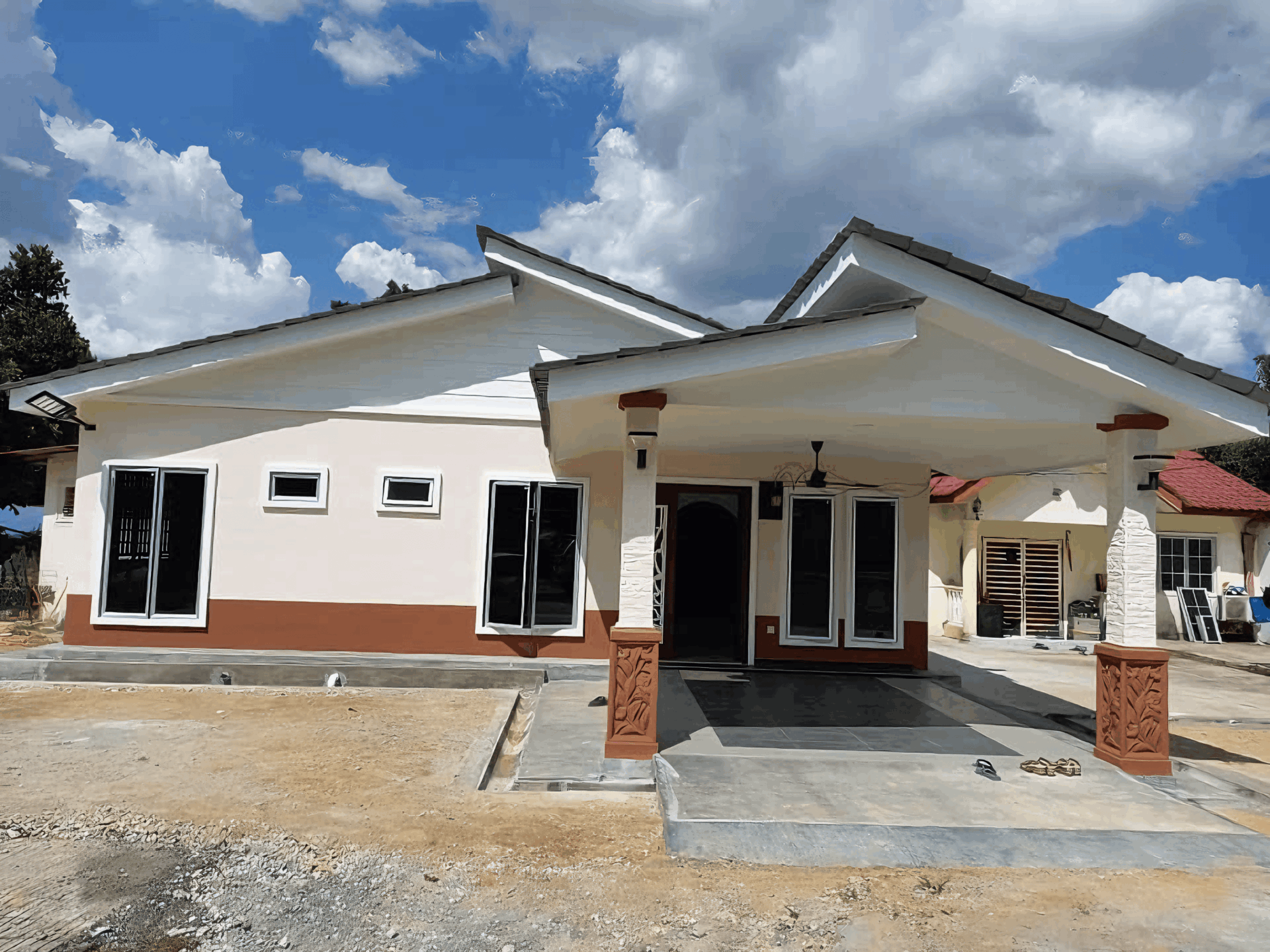Building a better Malaysia isn’t just about laying bricks and pouring concrete; it’s about ensuring those materials come together in the best possible way. That’s where quality control struts in, like a steadfast scaffolding for every construction project. Whether you’re constructing a high-rise in bustling Kuala Lumpur or a cozy home in a quiet suburb, the importance of keeping quality in check can’t be overstated. Think of quality control as the backbone of any successful construction endeavor—it supports the weight, maintains stability, and ultimately, ensures safety. In a country where development is surging and standards are evolving, understanding why quality control matters is essential for builders, homeowners, and everyone in between. So, let’s dive into why this unsung hero of the construction world deserves a standing ovation in the vibrant fabric of Malaysia’s growth story.
The Importance of Quality Control in Malaysian Construction Industry
In the Malaysian construction industry, quality control serves as a fundamental pillar that supports every successful project. By implementing robust quality management systems, construction companies ensure that every aspect of their work meets the established standards and regulations. This not only fosters client trust but also enhances the overall reputation of the industry. Effective quality control helps in minimizing construction defects, which can lead to significant time and cost overruns. Hence, prioritizing this aspect can mean the difference between a project’s success and a costly failure.
Furthermore, the application of stringent quality control measures leads to improved safety outcomes on-site. With construction being one of the sectors most prone to accidents, ensuring that materials and processes are up to par can reduce risks significantly. This is achieved through regular inspections, audits, and training programs that keep everyone aligned with safety protocols. Some vital components of quality control include:
- Material Quality Testing: Ensuring materials meet required specifications.
- Regular Site Inspections: Conducting systematic checks at various project stages.
- Employee Training: Educating workers about the best practices in quality standards.
Moreover, embracing technology has revolutionized quality control in construction. With innovations like Building Information Modeling (BIM), project managers can visualize and anticipate issues before they occur. This proactive approach streamlines processes and boosts productivity. Here’s a glance at how technology can aid in maintaining quality:
| Technology | Benefit |
|---|---|
| Drone Surveys | Provide real-time site monitoring. |
| 3D Printing | Ensure precision in construction materials. |
| Mobile Apps | Facilitate on-site quality documentation. |

Understanding Common Quality Challenges in Construction Projects
In the bustling world of construction, there are several obstacles that can affect the quality of a project. Among these, inadequate planning stands out as a major culprit. It often leads to miscommunication and unrealistic timelines, making it difficult for teams to deliver their best work. For example, budget constraints can force shortcuts, diminishing the overall quality and safety of the build. Projects digress from their original goals when there’s no clear roadmap or consistent updates, leaving stakeholders frustrated and hesitant.
Another significant hurdle is poor materials selection. Quality construction requires using appropriate materials that meet all specifications. Unfortunately, sometimes there’s a tendency to cut costs by opting for cheaper alternatives, which can lead to severe repercussions down the line. The choice of materials can affect everything from strength and durability to aesthetic appeal. Consequently, construction teams can face issues like cracks, leaks, or even structural failure, which not only inflate costs but also tarnish the reputation of the contractors involved.
Additionally, workforce skill gaps can create substantial challenges. The construction industry in Malaysia often relies on a diverse workforce, which can sometimes lead to varying levels of experience and expertise. When skilled workers aren’t available or adequately trained, it can jeopardize the execution of quality control measures. Ensuring that all team members are on the same page regarding standards and practices is crucial. Inconsistent workmanship can be detrimental, highlighting the importance of continuous training and investment in human resources to maintain high quality across all stages of a project.

Key Components of an Effective Quality Control System
Creating a robust quality control system requires a blend of structured processes and proactive teamwork. The backbone of this system often lies in clearly defined standards and procedures that outline the quality expectations at every project stage. Establishing a comprehensive manual that details specific guidelines ensures all team members are on the same page. Coupling this with ongoing training ensures everyone understands these standards, contributing to higher compliance and quality outcomes throughout the construction process.
Another integral part is frequent inspections and audits. These help in identifying potential issues before they escalate into costly problems. Regular site inspections, both scheduled and random, allow the quality control team to evaluate the work in progress and ensure it aligns with the predetermined standards. Additionally, documenting these inspections creates a valuable archive of data that can highlight recurring problems and inform future projects.
Collaboration between various disciplines is equally crucial for an effective quality control system. Engaging subcontractors, suppliers, and stakeholders early on fosters an environment of shared responsibility for quality. Implementing feedback loops where insights and suggestions can flow freely helps in refining processes and nurturing a culture of continuous improvement. To illustrate this, here’s a simple table that highlights the roles of different parties involved:
| Role | Responsibility |
|---|---|
| Project Manager | Oversees quality control planning and execution |
| Site Supervisor | Conducts routine inspections and enforces standards |
| Subcontractors | Adhere to quality guidelines as per the contract |
| Quality Control Team | Analyzes compliance and suggests improvements |

The Role of Skilled Workforce in Upholding Quality Standards
A highly skilled workforce is essential in ensuring that quality standards are not just met but consistently exceeded in construction projects. When workers possess specialized knowledge and expertise, they bring a level of precision to their tasks that automated processes simply can’t match. This hands-on approach allows for quick adjustments and problem-solving on-site, significantly reducing the risk of mistakes that could compromise the integrity of the entire project. In a country like Malaysia, where construction trends swiftly evolve, having professionals who can adapt and bring innovative solutions is a definite advantage.
Moreover, the experience of a skilled team goes beyond technical skills; it encompasses a thorough understanding of local regulations and compliance requirements. By being well-versed in the legal landscape, these workers help ensure that every aspect of a construction project adheres to national standards. This adherence is crucial not just for the project’s success but also for the reputation of the construction company involved. Proper training and ongoing education of the workforce guarantee that each member is up-to-date with the latest best practices and technologies in the industry, which is key to maintaining high-quality outputs.
Investing in a skilled workforce also encourages a positive work culture that prioritizes quality. When workers feel they are part of a knowledgeable team, pride in their work naturally follows. This leads to outcomes such as increased productivity, enhanced teamwork, and a greater focus on achieving not just compliance but excellence. The ripple effect of a motivated and skilled team contributes significantly to client satisfaction, resulting in repeat business and long-term success for construction firms across Malaysia. Here’s a simple table showcasing the benefits of a skilled workforce:
| Benefits | Impact on Quality |
|---|---|
| Expert Knowledge | Enhances precision in work |
| Regulatory Compliance | Ensures adherence to standards |
| Positive Work Culture | Boosts productivity and pride |

Innovative Technologies Enhancing Quality Control Practices
In the evolving landscape of construction, quality control practices are undergoing a significant transformation driven by innovative technologies. Today, tools have been developed that not only enhance precision but also streamline processes. For instance, drones are being utilized for site inspections, allowing for aerial views that traditional methods simply can’t provide. This not only ensures a thorough check of the site conditions but also minimizes time spent on manual inspections.
Additionally, the integration of Building Information Modeling (BIM) has revolutionized how construction teams approach quality assurance. BIM facilitates a comprehensive digital representation of the physical and functional characteristics of a project. This technology allows for improved collaboration among stakeholders, leading to real-time updates that help in identifying potential issues before they escalate. The advantages are clear—enhanced communication leads to fewer misunderstandings and higher quality outcomes.
Furthermore, the advent of IoT (Internet of Things) devices is making quality control smarter and more efficient. Sensors embedded in construction materials can monitor conditions like temperature and humidity, which can directly impact quality. These devices continuously feed data back to a central system, allowing project managers to act swiftly if readings go awry. In this way, quality control becomes not just a reactive measure but a proactive strategy that ensures the integrity and longevity of the structures being built.

Regular Inspections and Audits: A Pillar of Quality Assurance
In the bustling realm of construction, regular inspections and audits serve as the backbone that propels projects toward excellence. These evaluations provide a systematic approach to ensuring compliance with established standards and specifications. By engaging in frequent assessments, teams can identify potential issues before they snowball into costly problems, ultimately safeguarding the integrity of the project.
One significant benefit of ongoing inspections is the enhancement of communication among team members. When everyone is on board with the project’s standards, they are better equipped to maintain quality at every stage. Moreover, these audits reinforce a culture of accountability, where every worker understands their role in upholding quality benchmarks. With the construction industry being a collaborative effort, fostering an environment of shared responsibility is essential. Some key components observed during these audits include:
- Compliance Verification: Ensuring adherence to local regulations and building codes.
- Safety Protocols: Checking that safety measures are being implemented correctly.
- Material Quality: Testing materials to verify they meet required standards.
- Workmanship Assessment: Evaluating the quality of work performed by contractors and subcontractors.
To further emphasize the importance of these audits, consider the following table that illustrates common non-conformities found during inspections:
| Type of Non-Conformity | Potential Impact |
|---|---|
| Improper Material Usage | Structural Failures |
| Inadequate Safety Measures | Increased Accident Rates |
| Substandard Workmanship | Higher Maintenance Costs |
| Code Violations | Legal Repercussions |
By making regular inspections and audits a priority, construction teams in Malaysia can mitigate risks, enhance quality, and ultimately provide better value to clients. It’s not just about ticking boxes; it’s about cultivating a lasting legacy of reliability and excellence in every project.

Developing a Quality-Driven Culture Among Construction Teams
Creating a culture that prioritizes quality in construction teams starts with open communication and team involvement. It’s all about ensuring that every team member understands their role in maintaining high standards. Regular quality training sessions can be beneficial; they not only inform but also empower workers. When workers feel the weight of their responsibilities, they’re more likely to take pride in their craftsmanship.
Implementing a system for continuous feedback is another crucial aspect. Encouraging team members to highlight any quality issues or suggestions fosters a collective approach to problem-solving. This can be structured through weekly meetings or informal catch-ups, where everyone is free to share insights and experiences. Building this kind of environment can help in recognizing the importance of quality assurance as a shared responsibility rather than a task assigned to only a few individuals.
Additionally, celebrating successes in quality enhancement can significantly boost morale. Recognizing and rewarding teams that meet or exceed quality benchmarks can motivate others to aim high. Consider establishing a simple rewards system, as shown in the table below, to acknowledge outstanding contributions:
| Achievement | Reward |
|---|---|
| Zero Defects in a Project | Team Lunch |
| Best Quality Improvement Suggestion | Gift Voucher |
| Most Consistent Quality Standards | Award Certificate |

Strategies for Continuous Improvement in Quality Control Processes
In the dynamic landscape of construction in Malaysia, embracing a culture of continuous improvement can significantly enhance quality control processes. Teams should initiate regular reviews of their practices, focusing on key metrics such as project timelines, cost efficiency, and defect rates. Implementing feedback loops where insights from engineers, contractors, and inspectors are shared can lead to actionable strategies. By analyzing this data, teams can uncover patterns that allow them to refine their workflows and tackle weaknesses head-on.
Moreover, technology plays a crucial role in streamlining quality control. Adopting tools like Building Information Modeling (BIM) can enhance collaboration between teams, ensuring everyone is on the same page from planning to execution. Additionally, utilizing mobile applications for real-time reporting helps in documenting issues as they arise, leading to faster resolutions. Consider integrating automated auditing systems that can continuously monitor quality compliance through IoT sensors, reducing the likelihood of human error and increasing efficiency.
Lastly, investing in training and development fosters a knowledgeable workforce committed to quality standards. Organizing workshops and on-site training sessions can empower employees with the skills to identify quality issues early on. Creating a reward system that recognizes quality improvement efforts motivates teams to engage in these practices actively. Here’s a quick overview of potential training topics to consider:
| Training Topic | Description |
|---|---|
| Quality Management Systems | Understanding ISO standards and compliance. |
| Risk Assessment | Identifying and mitigating potential quality risks. |
| Effective Communication | Improving collaborative efforts among team members. |
Wrapping Up
As we wrap up our exploration of why quality control is the backbone of successful construction projects in Malaysia, it’s clear that this isn’t just some checkbox task to tick off. It’s about building trust—trust between contractors, clients, and communities. When we prioritize quality, we’re not just ensuring a solid structure; we’re laying the foundation for lasting relationships and sustainable growth in our beautiful nation.
So whether you’re a seasoned contractor, a passionate architect, or just someone curious about how buildings come to life, remember that quality control isn’t just a process; it’s an essential mindset. Every nail driven, every brick laid, and every decision made can lead to success that stands the test of time. Let’s keep our eyes on the prize and build Malaysia’s future on robust, quality-driven projects. After all, a strong backbone supports everything that’s built on it, doesn’t it? Here’s to better construction, better cities, and a brighter tomorrow!
Source link
kontraktor rumah
bina rumah
pinjaman lppsa
pengeluaran kwsp
spesifikasi rumah
rumah batu-bata
pelan rumah
rekabentuk rumah
bina rumah atas tanah sendiri
kontraktor rumah selangor
rumah banglo




